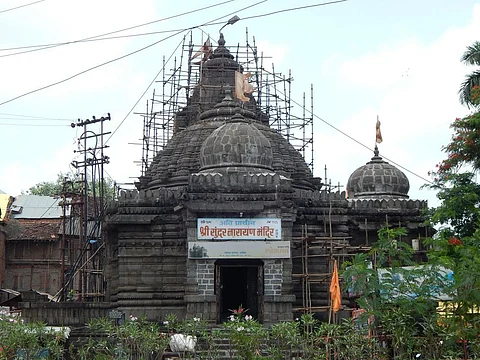
- Home
- न्यूजग्राम
- India
- World
- Politics
- Entertainment
- Culture
- Lifestyle
- Economy
- Sports
- Sp. Coverage
- Misc.
- NewsGram Exclusive
- Jobs / Internships

Nashik, May 8, 2017: The conservation work for the 17th century Sundarnarayan Temple will soon be initiated by the Archaeological Survey of India (ASI).
In July 2015, the Aurangabad unit of ASI had started chemical conservation work after seeking permission for structural conservation. But realizing that removing the vegetation and chemically conserving the temple would not be sufficient because of the cracks in the stones which may loosen or give away in a couple of years, the team wrote to the district collector and the state archaeological department (Nashik branch) about the need for the temple's structural conservation. Now, the work will be done in phases.
Shrikant Gharpure, Assistant Director of the Department of Archaeology, Maharashtra has recently said to TOI, "We will soon start with the first phase of the conservation. The superstructure (dome) will be dismantled step by step."
NewsGram brings to you latest new stories in India.
On July 13, administrative approval of Rs 4.51 crore and financial nod of Rs 2.50 crore has been given for the conservation.
Constructed in 1756 by "Sardar of Peshwas", Gangadhar Yashwant Chandrachud, the Sundarnarayan temple is the crowning example of undying faith and everlasting devotion. One unique aspect of the temple is that it is built at such an angle, that on 21st March, rays of the rising Sun first fall exactly upon the idols.
The superstructure is around 50-55 feet in height and needs immediate attention. "There will be no difference in the size," said Gharpure.
The decoration, artwork, floral parts, carvings of gods and goddesses will be prepared in the same manner like the original one. It is made of basalt and black stone and faces the Godavari River. In its sanctum sanctorum, there are idols of deities such as Vishnu, Laxmi and Vrinda. Besides, it also house idols of other gods and goddesses. The raw material and stone will be brought from Deglur, Nanded and the lime to be brought from Gujarat.
NewsGram brings to you latest new stories in India.
Gharpure also said, "the temple is at the centre of the city near Raviwar Karanja. We noticed that it had become dangerous and had to be restored to its original form immediately. In July last year, I met state cultural minister Vinod Tawde and told him about the situation. I have been following up the issue."
It is furthermore estimated that the conservation work will take about two years to finish.
– prepared by Himanshi Goyal of Newsgram. Twitter handle- @Himanshi1104
